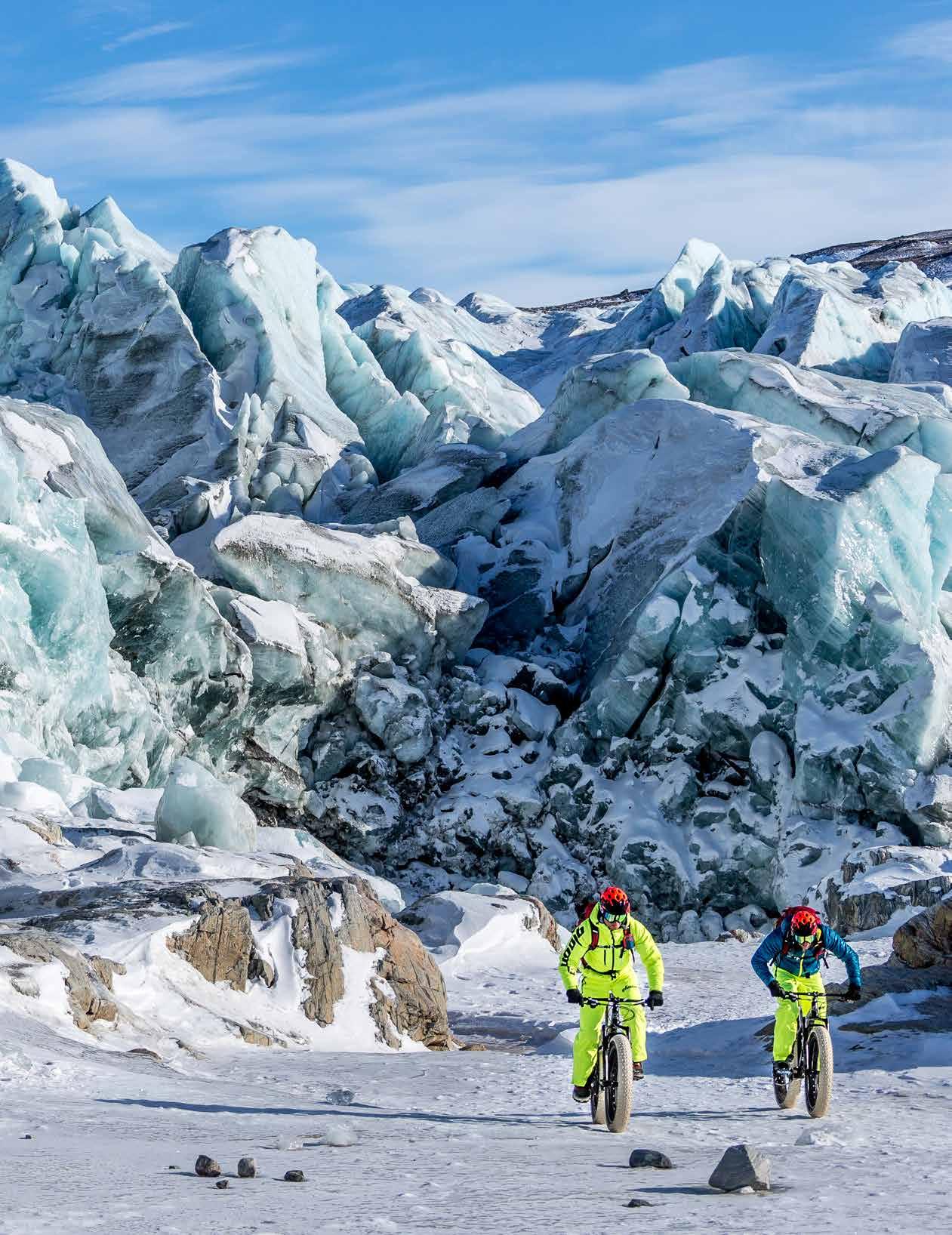
3 minute read
The amazing space blanket
THE AMAZING SPACE BLANKET More useful than duct tape on the trail
By Allen Macartney
Advertisement
I’ve got at least 12 emergency, mylar space blankets at home. Tiny and feather-lite, they’re in my car, my survival pack, and my first aid and canoe kitchen packs – any place where I might use them outdoors. But I’ve never used one. Or even unfolded one from its petite container.
We all talk about how important these are for emergencies, but they’re usually tucked away and forgotten. It’s time to explore some of the ubiquitous uses for these pint-sized life savers.
A space blanket is essentially a plastic sheet coated with metallic particles. First developed in the 1950s and used on space flights, mylar thermal space blankets reflect heat. That’s all they do – up to 90 per cent of body heat. So if your snow-shoeing or skiing adventure goes sour, wrap yourself up in a space blanket – shiny side in – before you get too cold. (A cold body reflects darned little heat.) Don’t wrap it around the outside of your winter coat, but around either the inside of your jacket or cut off a piece and make it into a reflective vest against your body. Then watch out that you don’t get too warm and start sweating.
Heat for your feet? If they’re cold and you have an extra space blanket, cut off two thin strips and put them in your boots. Your feet will get toasty warm. If you’re still a bit too cool, cut off more strips and make liners for your hat, gloves, mitts and pants.
Fall and spring camping can be cold. Set up one or two space blankets inside your tent. If you light a candle lantern, your tent will warm up quickly and the reflective blankets will provide both light and heat. And for those cold nights when a campfire casts too little heat, position a blanket behind the flickering flames to bounce the heat back at you. Don’t worry about damaging the mylar; it melts at 254 degrees centigrade.
In summer when you’re backpacking in blistering heat, reverse the space blanket (shiny side out) so it reflects the sun and heat away. Also it makes an excellent sun shield.
Some people use waterproof space blankets and cord to make a tarp, poncho, divvy sack or
Snowshoe Series Wakefield, QC
Presented by: OUTDOORS OTTAWA MAGAZINE www.madtrappersnowshoe.com
Atlas Mad Trapper SNOWSHOE SERIES
REGISTER TODAY! REGISTER TODAY!

rain catcher. If you think we’ve just about exhausted the uses for space blankets, think again: a liner for a solar oven, a signaling mirror, a drop-sheet for your tent or picnic. Cut strips make an excellent trail marker, or use it as a pack liner (inside) or a rain shield (outside).
But don’t put a space blanket over your sleeping bag in a tent or snow shelter when winter camping. Mylar isn’t breathable. Moisture condenses under it, and your bag gets wet, losing any insulation ability. Instead, put the space blanket on top of your foam mattress or mat. The reflected heat from your body will help you sleep soundly.
Now that you know how useful these blankets are, perhaps you should scoot out and buy a couple more. And start using them!
December 12 - The “Transition” Race. Snowshoe or Trail Run? Only Mother Nature knows! Atlas 10k and Solefit 5k January 2 - The “Hilly” Course. Expect some elevation change... Atlas 10k and Solefit 5k January 23 - Bushtukah Night Race and i2P Fundraiser. 6:30pm start. It’ll be dark. Bring your headlamps! Atlas 10k and Solefit 5k February 20 - The Series Finale! Atlas 10k and Solefit 5k
LOYAL SPONSORS: ATLAS SNOWSHOES / BUSHTUKAH / SOLEFIT / SALOMON / BROADHEAD BEER RUNNERSUNITED.COM / OPTIMIZED MARKETING SOLUTIONS
LIVE AND BREATHE NATURE






opg.com/watersafety
so we want you to stay clear and stay safe. OPG is a part of communities across Ontario, turn dangerous quickly and without warning. Water near a dam or hydroelectric station can
Water levels can rise











